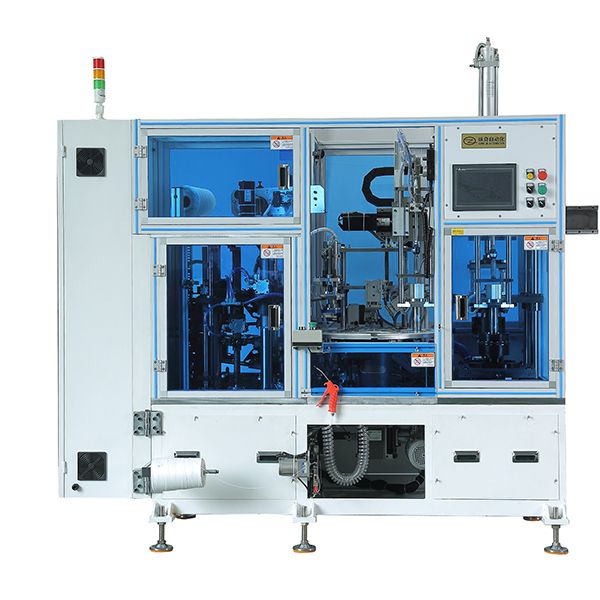This website uses cookies primarily for visitor analytics. Certain pages will ask you to fill in contact details to receive additional information. On these pages you have the option of having the site log your details for future visits. Indicating you want the site to remember your details will place a cookie on your device. To view our full cookie policy, please click here. You can also view it at any time by going to our Contact Us page.
Here, Marek Lukaszczyk, European and Middle East Marketing Manager at WEG, explains why motor efficiency is critical in 2023 and how manufacturers can stay ahead of the curve. Stator Manufacturing Equipment For Single-Phase Motors

Energy efficiency in manufacturing and other industrial facilities starts with the choice of equipment. While improving efficiency should be a facility-wide strategy, having an asset-level understanding of energy consumption allows businesses and operators to identify inefficiencies at the more granular level and make the necessary changes.
Around eight billion electric motors are currently used in the EU, consuming almost half of the electricity that Europe produces. Their prominence means that manufacturing and other industrial facilities can make significant energy savings by ensuring their electric motors make the grade.
A shift in the rules
Currently, efficiency standards for motors and variable speed drives (VSDs) in Europe are set out in EU 2019/1781, which, in July 2021, repealed and replaced the existing regulation on eco-design for electric motors (EC) No 640/2009. In so doing, it brought reductions in energy consumption, while maintaining required safety standards.
At the time, EU 2019/1781 expanded the regulation to cover single-speed, three-phase 50Hz or 60/60Hz induction motors with two to six poles, a rated output of 0.75 to 375kW and a rated voltage of up to 1,000V.
On 1 July 2023, this legislation enters a new phase and efficiency rules will now apply to single-phase motors rated 0.12kW and above. Before they can be used in any machinery or industrial facility, these single-phase motors must meet IE2 levels.
The other big change for manufacturers is that they will need to purchase IE4-rated motors if they require an output of between 75 and 200kW.
Therefore, at a time when energy costs and sustainability dominate the industrial agenda, the next phase of EU 2019/1781 will push the boundaries of what was already a significant shift in the EU’s efficiency drive.
Regardless of whether the manufacturer is operating in the EU, UK or elsewhere, if they are using a motor or variable speed drive (VSD) that falls under the scope of the new phase of regulations, compliance must be demonstrated.
The value of an upgrade
Many motors used in manufacturing, oil and gas and other industrial settings are low efficiency, which can have a negative impact on asset costs and productivity. Energy consumption accounts for 96 percent of the total lifecycle cost of an electric motor, so it pays to opt for a premium efficiency product.
With age comes risk. Many older motors have at some point been rewound because of copper coil failure, but this process can reduce motor performance efficiency. Therefore, at the very least, manufacturers should complete a cost-benefit analysis prior to rewinding to determine if purchasing a higher-efficiency motor is more economically beneficial.
Although exact benefits will vary depending on the application, selecting high-efficiency motors will often result in a good return on investment.
It might be tempting to hold off until July, but being proactive is the only way manufacturers can truly reap the long-term financial and sustainable benefits of increased efficiency.
While the legislation requires manufacturers to use compliant motors, there are ways to improve efficiency beyond upgrading. For example, an electric motor must be properly dimensioned according to its real load if it’s to deliver maximum return.
An oversized motor, with the actual load being less than 50 percent of the rated load, will have a lower efficiency and power factor values than one that is sized appropriately.
When retrofitting any motor, sizing and efficiency should both be considered. Depending on the sector, there might be additional considerations. For example, explosion-proof ATEX motors in oil and gas applications may face design constraints like deration for VSD operation or a reduced starting current. This could lead to the motor needing a larger frame size, as well as other considerations.
Harnessing the latest technology for asset monitoring can allow manufacturers to understand the operational status of their electric motors, as well as other equipment such as VSDs, soft starters and gearboxes. There is an increasingly wide range of Internet of Things (IoT) fleet management solutions available, which manufacturers can deploy.
Platforms such as WEG’s Motion Fleet Management (MFM) complement conventional asset monitoring by providing real-time insights into the performance of motors and drives from anywhere in the world. These include built-in predictive maintenance analytics that can help identify future problems, preventing shutdowns and flagging issues, such as overheating, that could result in a motor running inefficiently.
Manufacturing and many other industries must be prepared for the change in EU eco-design legislation in July. However, efficiency means more than just upgrading. The new motor must be sized correctly for the application, and, by integrating smart asset monitoring technology, they can be confident that any inefficacies will be flagged early.
Visit the WEG website to find out how you can improve electric motor efficiency.

Three-Phase Motor Stator Production Print this page | E-mail this page